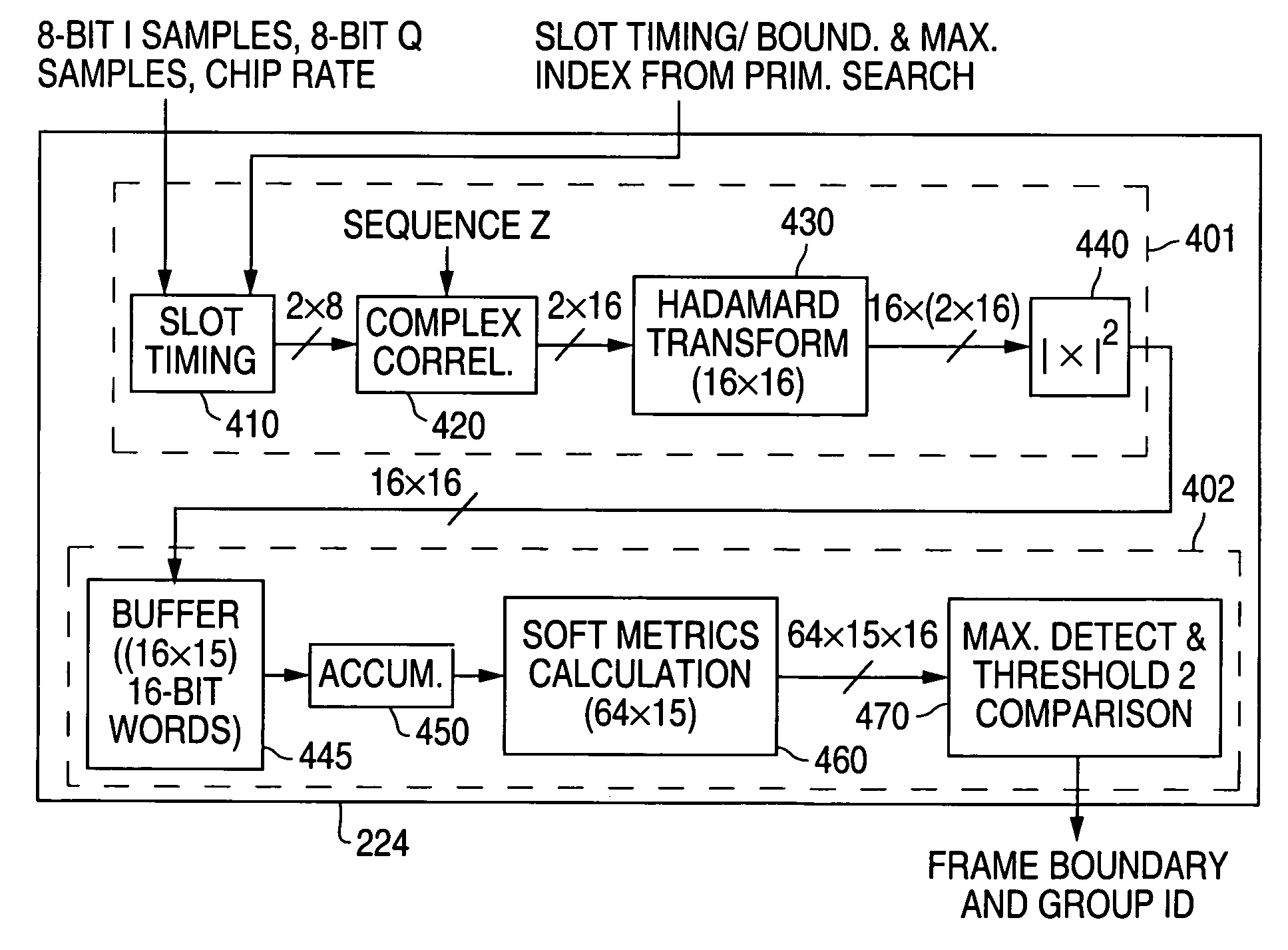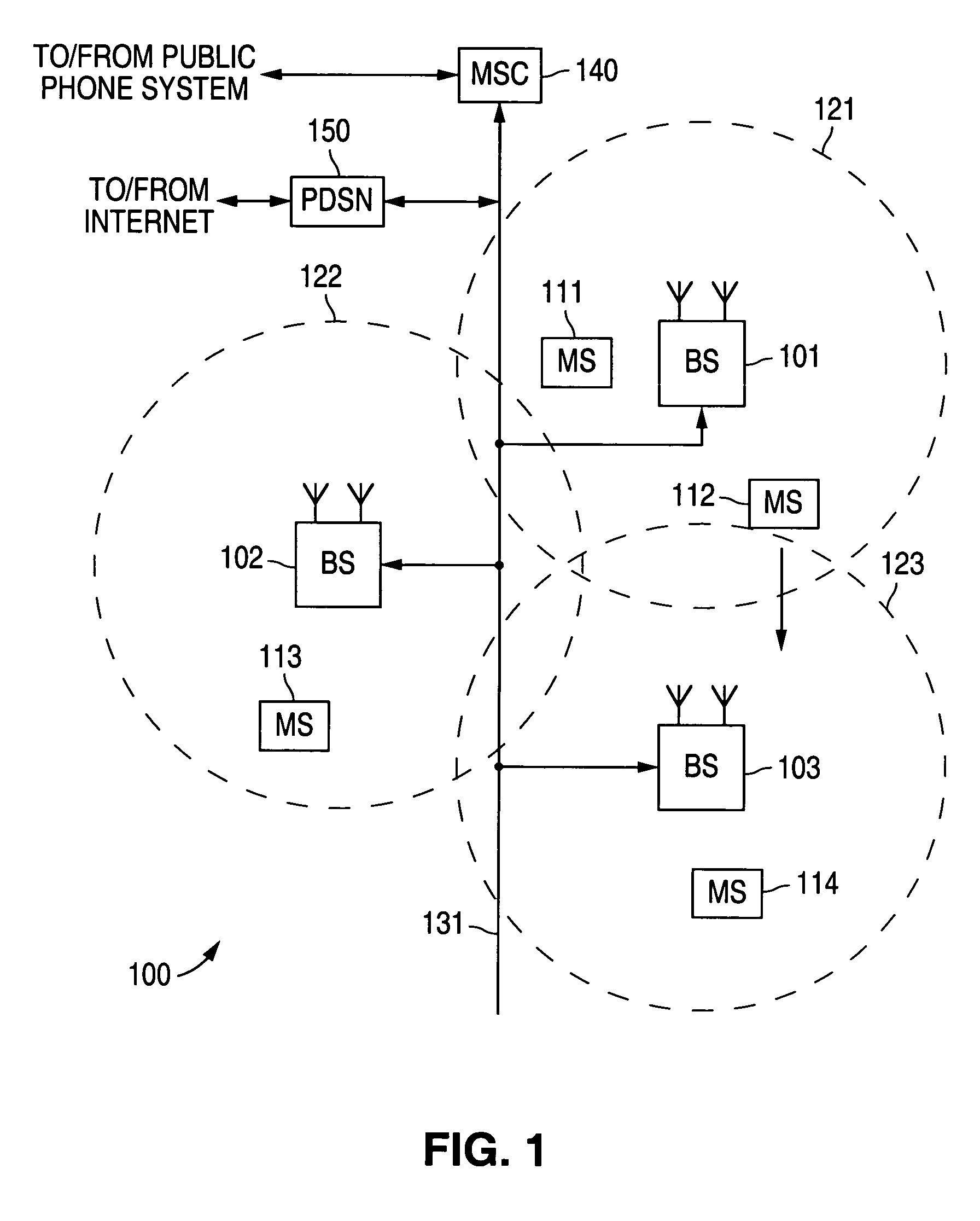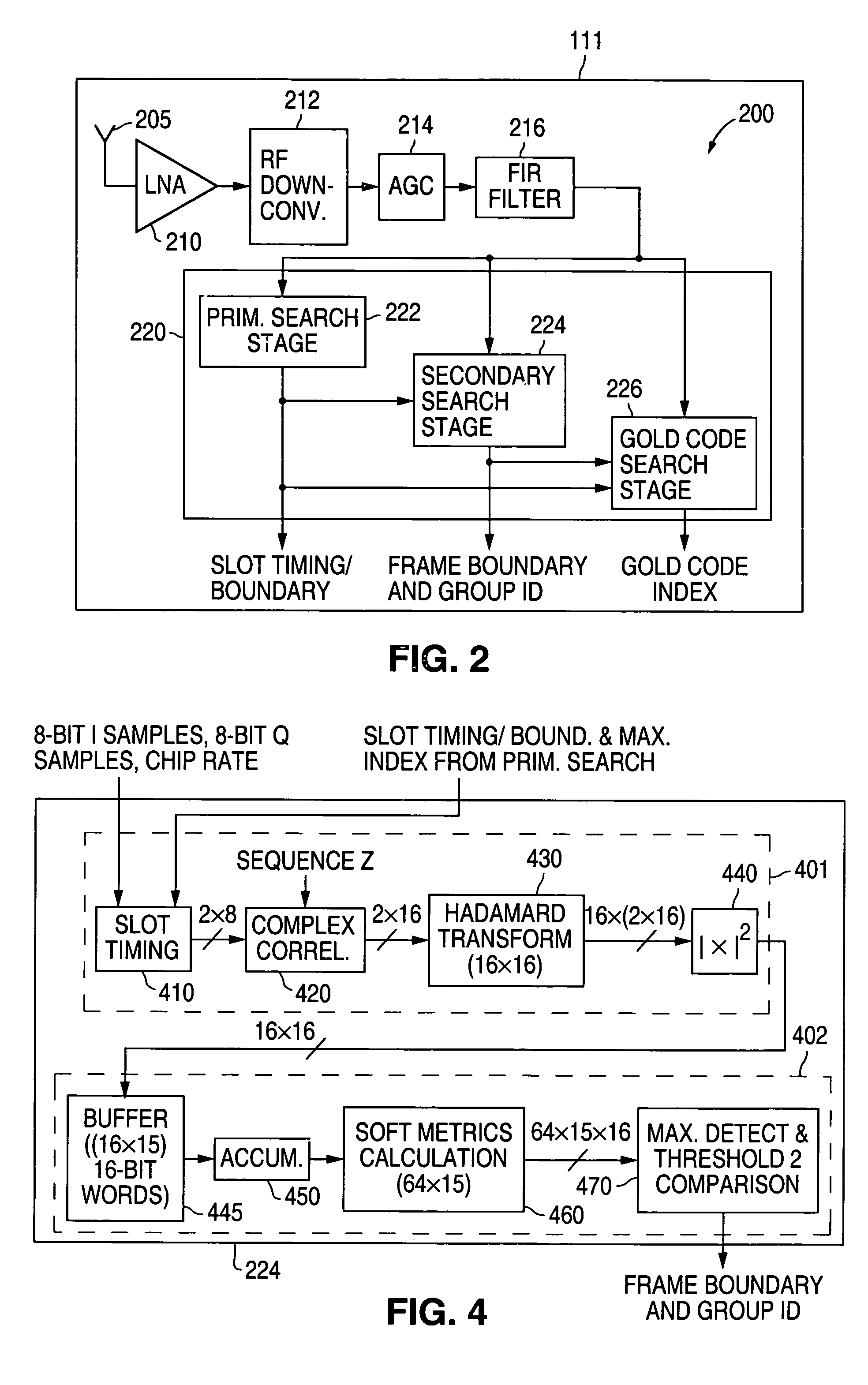Apparatus and method for secondary synchronization channel detection in a 3GPP WCDMA receiver
- Summary
- Abstract
- Description
- Claims
- Application Information
AI Technical Summary
Benefits of technology
Problems solved by technology
Method used
Image
Examples
third embodiment
[0079]The first exemplary embodiment of secondary search stage 224 described above in FIGS. 4 and 7 calculates the frame timing information and the Gold code (i.e., group ID) information using 64×15 metrics derived from 15 time-shifted versions of each of 16 different Hadamard transform outputs. Such an operation requires a large amount of processing power. However, it is possible to derive the frame timing information and group ID information more easily in secondary search stage 224 by taking advantage of the synchronization detection properties of Comma-Free Reed-Solomon (CFRS) codes used for error correction in receiver 200. Accordingly, an advantageous second and third embodiment of secondary search stage 224 is presented in FIGS. 10 and 11 that uses the synchronization detection properties of Comma-Free Reed-Solomon to reduce the processing complexity of secondary search stage 224.
[0080]The use of CFRS codes has been proposed for the 64 codewords with the largest minimum symbo...
second embodiment
[0090]Next, syndrome-based frame time detection block 1070 determines the number of slots the received codeword is shifted (or delayed) by with respect to the frame boundary. At this point, syndrome-based frame time detection block 1070 has detected the frame boundary. This delay is the frame boundary / timing information that is transmitted to Gold code search stage 226. According to secondary search stage 224 (as illustrated in FIG. 10), syndrome-based frame time detection block 1070 finds the correct codeword of length 15 corresponding to the codeword of length 3 at the output of R-S decoding correction block 1060 and sends the corrected codeword of length 15 to sixty-four codeword comparison and maximum detection block 1080.
[0091]Next, sixty-four codeword comparison and maximum detection block 1080 compares the corrected codeword of length 15 with each of the 64 given CFRS codewords of length 15, each shifted by the amount found in syndrome-based frame time detection block 1070. S...
PUM
 Login to View More
Login to View More Abstract
Description
Claims
Application Information
 Login to View More
Login to View More - R&D
- Intellectual Property
- Life Sciences
- Materials
- Tech Scout
- Unparalleled Data Quality
- Higher Quality Content
- 60% Fewer Hallucinations
Browse by: Latest US Patents, China's latest patents, Technical Efficacy Thesaurus, Application Domain, Technology Topic, Popular Technical Reports.
© 2025 PatSnap. All rights reserved.Legal|Privacy policy|Modern Slavery Act Transparency Statement|Sitemap|About US| Contact US: help@patsnap.com



